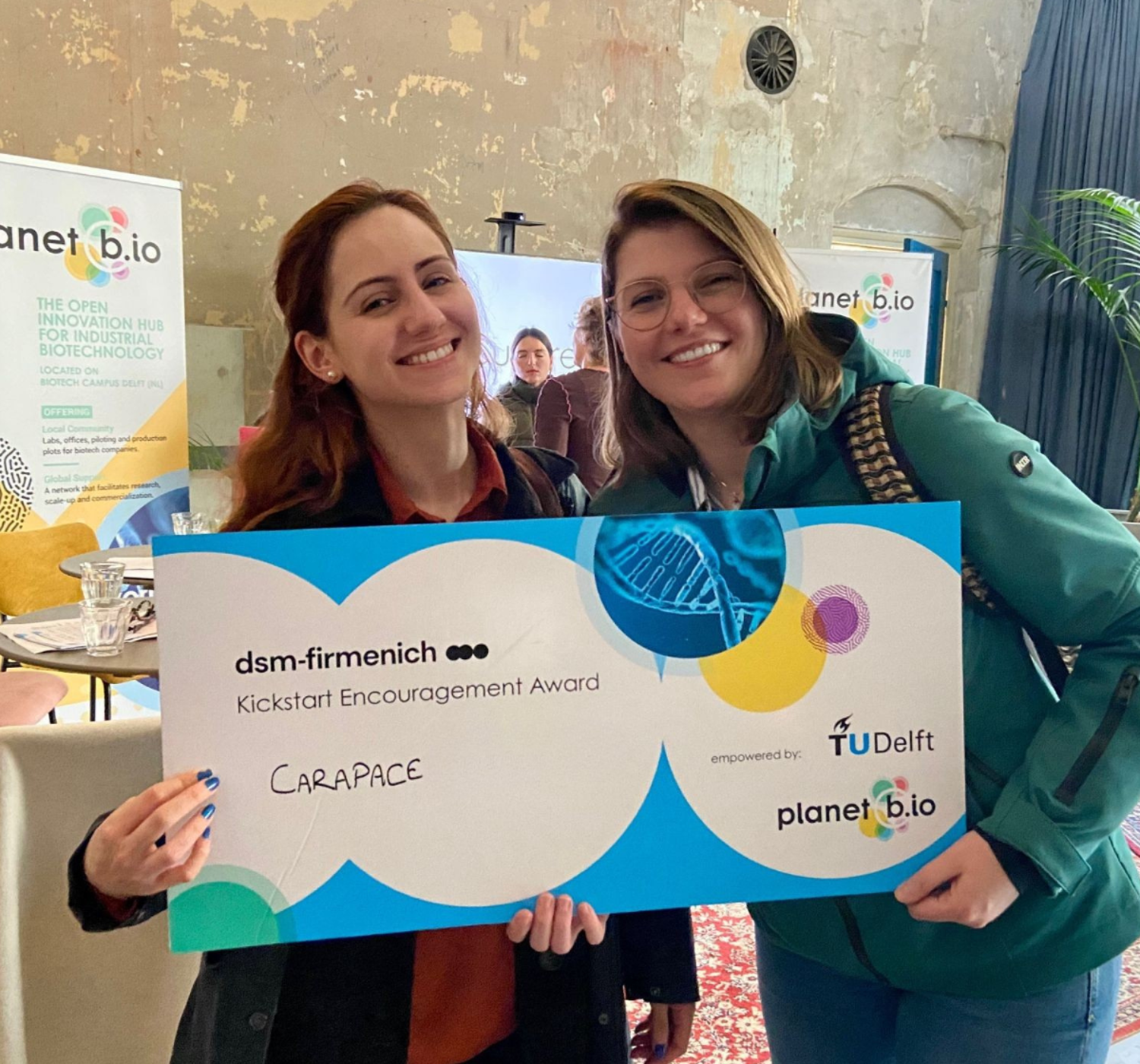
Carapace Biopolymers, the first start-up to make use of Planet B.io’s flex office at Biotech Campus Delft, is working on innovative biobased and biodegradable coatings. By integrating biologicals they aim to boost seed germination and healthy plant growth. The company recently received the Biotech Booster Level 1 financing of EUR 200,000. Co-founders Suellen Espíndola and Marouschka Blahetek share their journey, goals, and vision.
How did Carapace Biopolymers come about?
Suellen: “Carapace began from my PhD research at TU Delft, where we focused on replacing harmful plastics in agriculture with bio-based alternatives. After seeing the potential of our findings, I met Marouschka through the TU Delft Valorization Center. She brought the business expertise, while I brought the scientific knowledge. Together, we combined our skills to create a company dedicated to developing biodegradable coatings for seeds and fertilizers, aiming to offer sustainable solutions for agriculture.”
Which problems do you aim to solve with your innovation?
Suellen: “There are multiple problems with agricultural products, and legislation is catching up. The main problem we want to solve is the presence of chemical products that end up in the food chain. We aim to create materials that are fully biodegradable and sustainably sourced, avoiding fossil-based inputs. Microplastics from seed or fertilizer coatings are a significant concern, as is the overuse of chemical and mineral fertilizers. By introducing new products with a better end-of-life profile, we hope to encourage farmers and growers to transition to sustainable practices."
“Another issue is soil degradation caused by intensive agriculture. This includes both biological and physical degradation. Our solution involves improving soil health by designing products that support the soil microbiota—the community of microorganisms vital to soil quality. With these innovations, we aim to be an active player in the transition to sustainable agriculture.”
Marouschka: “Starting in 2026, the European Union will ban microplastic-generating coatings in fertilizers, followed by seed coatings in 2028. The industry needs alternatives, and we aim to be part of the solution.”
What’s the story behind the name Carapace?
Suellen: “The name comes from the exoskeleton of animals like turtles. It’s a nature-inspired concept that reflects dynamic protection and adaptability. The structure of a turtle’s carapace, with its layered complexity and multifunctionality, mirrors our approach to coatings—intelligent, bio-based, and adaptable.”
"Starting in 2026, the European Union will ban microplastic-generating coatings in fertilizers, followed by seed coatings in 2028. The industry needs alternatives, and we aim to be part of the solution."
What does receiving the Biotech Booster funding mean for you?
Marouschka: “We’re glad to have this support. Biotechnology solutions take time to develop, and this funding allows us to continue proving our concepts. Specifically, we’ll target microbes for biofertilization and plant growth promotion. We’re also exploring collaborations with startups working on biologicals that lack delivery mechanisms. The funding will help us conduct research and testing in controlled environments like greenhouses.”
What are your next steps?
Suellen: “We plan to establish proof of principle for our coatings, both as biostimulants and with integrated microbes. To achieve this, we’re focusing on hiring and expanding our team. We’re currently looking for interns from universities and applied sciences programs. Additionally, we’re aiming to make our first junior hire next year.”
Marouschka: “It’s important to start building internal expertise. While external consultants are useful, having in-house knowledge is crucial for long-term success.”
Where do you see Carapace in five years?
Marouschka: “In five years, we aim to have a full production setup and multiple clients. By then, our biodegradable coatings should be in full production, and we’ll be on the verge of commercializing our biostimulant line. Our approach is phased, starting with partnerships and proof of concepts before scaling up.”
Suellen: “We also dream of having our own production shed. Initially, we’ll use existing machinery for testing, but eventually, we plan to set up a certified facility for efficient production.”
Marouschka: “The machinery will be ours, allowing us to maintain control over the production process. While final coating applications will happen at the client’s site, we’ll provide the necessary expertise.”
Want to learn more about Carapace Biopolymers? Check out their website; https://carapacebio.nl/
